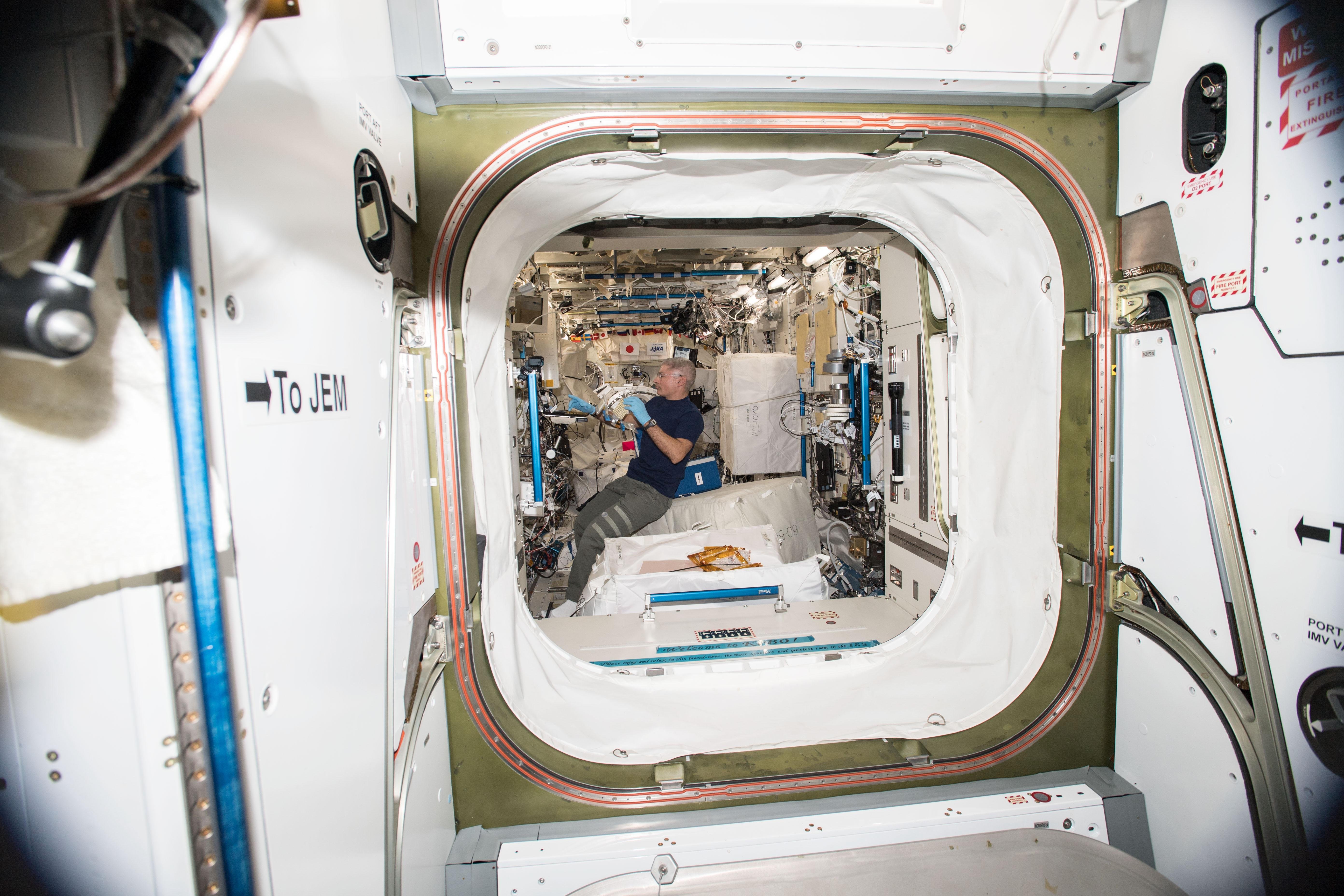- post-flight analysis
[Zebrafish Muscle2]
Identification of space environment-sensitive gene and investigation of the sensing mechanism using Zebrafish
- Biology and Biotechnology
ISS Science for Everyone
SCIENCE OBJECTIVES FOR EVERYONE
The main question to be answered in the Identification of Space Environment-sensitive Gene and Investigation of the Sensing Mechanism Using Zebrafish (Zebrafish Muscle 2) experiment is whether atrophy of muscles in space also occurs in fish, and if so, why. Interesting gene expression changes were found in the results of the previous experiment: Zebrafish Muscle. Zebrafish Muscle 2 examines whether these gene expression changes are the response to microgravity or other factors, such as space radiation, using artificial 1G conditions on the International Space Station (ISS).
Experiment Description
RESEARCH OVERVIEW
- Physical exercise and control of posture are important for maintaining muscle mass and strength. In microgravity conditions, postural, or anti-gravity, muscles undergo substantial atrophy because of a prominent decrease in the gravity-dependent muscle activity. The question is why atrophy of muscles occurs in microgravity.
- The Identification of Space Environment-sensitive Gene and Investigation of the Sensing Mechanism Using Zebrafish (Zebrafish Muscle 2) investigation provides a better understanding of how microgravity affects muscle mass and strength, in terms of genes and molecules. This is done by examining the gravity-dependence of skeletal muscles in zebrafish. Further, the gene expressions that relate to the atrophy of muscles is compared under microgravity and artificial 1-G conditions on the ISS.
- Results from the investigation can provide insight into the molecular changes that cause muscles to atrophy in microgravity. This research has the potential to lead to new drugs or treatments for patients on extended bed rest, or with limited mobility.
DESCRIPTION
Physical exercise and control of posture are important for maintaining muscle mass and strength. Under microgravity conditions, the postural muscles undergo atrophy because of prominent decrease in their gravity-dependent activity. The main question of the Identification of Space Environment-sensitive Gene and Investigation of the Sensing Mechanism Using Zebrafish (Zebrafish Muscle 2) investigation is whether atrophy of muscles occurs in space also affects fish, and why it occurs. Transcriptome analysis of Zebrafish from the Zebrafish Muscle experiment in 2014 revealed interesting gene expression changes. The Zebrafish Muscle 2 investigation examines if these gene expression changes are a response to microgravity exposure, or other factors such as space radiation, while using artificially-generated 1G conditions on the International Space Station (ISS).
The results from Zebrafish Muscle 2 are compared with gene expression changes caused by aging or depressed motor activity, to identify the molecular changes involved in muscle atrophy. Results could lead to new medicines or treatments for weakened muscles.
Media Gallery


Applications
SPACE APPLICATIONS
Results from the investigation provide more insight into the molecular changes that cause muscles to atrophy in microgravity. Understanding the chemical signals, proteins and other cellular activity involved in muscle atrophy could help researchers develop countermeasures to keep astronauts physically strong in space during long-duration missions.
EARTH APPLICATIONS
Results from “Zebrafish Muscle” investigations could identify the molecular changes involved in muscle atrophy, which could lead to new drugs or treatments for weakened muscles. The research could benefit patients on extended bed rest or those with limited mobility.
Operations
OPERATIONAL REQUIREMENTS AND PROTOCOLS
Eighteen zebrafish larvae are accommodated in 6 Zebrafish Experiment Units (groups A, B, C, with 2 Units/group) and transported to ISS via a SpaceX Dragon Cargo Vehicle. After arrival at the ISS, 2 Units (group C) are placed in a microgravity compartment of the Cell Biology Experiment Facility (CBEF), and the other 2 Units (group B) are placed in an artificial gravity compartment. For the remaining 2 Units (group A), fish are fixed with RNAlater and the CBEF centrifuge is activated. After approximately 2 days, the CBEF centrifuge is stopped and the fish in 4 Units (groups B and C) are fixed with RNAlater. All fixed samples are returned to Earth under frozen conditions aboard a SpaceX Dragon Cargo Vehicle.
Publications
PRINCIPAL INVESTIGATOR(S)
SEHARA Atsuko [Kyoto University]
Unless specified otherwise, rights to all images belong to ©JAXA



